Whether you’re still trying to be competitive with much younger athletes or are just looking for the maximum health benefits from a fitness routine, strength training is a must. The problem is that strength training is mostly misunderstood—and therefore misapplied—by many who are over 50 (and even under 50). And it’s very important that they get it right, because we all start losing muscle strength each year after we turn 30. That’s right, 30!
Men too often focus all their strength-training attention on their biceps, pumping out preacher curls and dumbbell curls until they can see a small ice-cream scoop of a muscle when they flex their arms. Forget it, men; bulging biceps do not turn back the clock. And women too often completely ignore strength training to just focus on cardio and stretching exercises, using the lame excuse that they don’t want to look like the buff women on “American Gladiator.” Don’t worry, there’s no chance of that happening.
Men and women have much to gain from strength training, including lower blood pressure, increased resistance to injury, decreasing arthritis symptoms, and fending off osteoporosis. Some may lose weight because the body keeps burning calories after the workout is done; some may not actually lose weight (because muscle weighs more than fat), but they will lose pants- and dress-sizes. In general, you’ll look and feel better.
Getting started
There are some basic rules whenever you start a new exercise routine:
- Check with your doctor to ensure that you are physically fit enough.
- Form is more important than weight. Some muscle-heads at the gym love to stack on the weights and then grunt loudly through their repetitions. Many of them are using such poor form that they are receiving very little of the benefits.
- Start with the amount of weight that you can lift 10 to 12 times without losing the form. You should struggle to complete the last couple reps. If they are easy, increase the weight by the next increment.
- Keep breathing. Generally, you exhale when pushing against the weight and inhale when lowering it.
- Rest about one minute between sets.
- Rest two days between working a particular muscle group. For example, if you work on the chest and arms one day, wait 48 hours before you work them again. If you want to work out the next day, target a different set of muscles, like the legs and buttocks. All your muscle and strength gain takes place during these rest periods.
A strength-training sampler
There are a wide variety of exercises that you could perform, depending on how hard you want to work and which muscles you want to target. Following are three exercises that are simple to perform but yield the most strength benefits.
- Push-ups. Yup, this old stand-by is still the best way to strengthen arms, chest, back, and abdominal muscles.
How to Perform the Perfect Push-up: Lay face down on the floor. Place palms against the floor, slightly wider than your shoulders. Keeping your body straight (that means butt not poking up toward the ceiling and gut not sagging toward the floor), push your body up until your arms are straight and you’re balanced on your toes. Lower your body until your elbows are at a 90-degree angle to the floor. Then push back up. Inhale on the way up; exhale on the way down. There are many variations of the push-up that can challenge even the fittest person, including incline, decline, and one-armed push-ups.
Beginners: If this is too difficult, perform the push-up with your knees on the ground. After a couple weeks you should be able to start doing regular push-ups.
- Lunges. You’ve probably seen people doing these at your fitness club up and down the aisles with their trainers walking beside them cheering encouragement. This single exercise works the quads, hamstrings, glutes, and calves.
How to Perform the Perfect Lunge: Stand with one leg forward and the other leg back, as if you just stepped across a creek. Lower the body until both knees are at 90-degree angles. Slowly, push the back leg forward.
